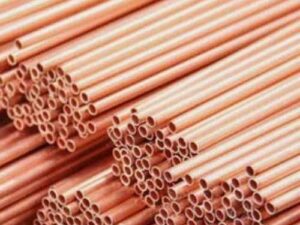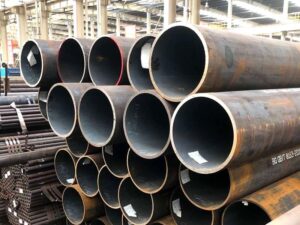Description
Mechanical Tubing: The Unsung Hero of Industrial Strength
Mechanical tubing, often overlooked, plays a crucial role in countless industries, from automotive to aerospace, construction to agriculture. Unlike its more glamorous cousin, pressure tubing designed to transport fluids under pressure, mechanical tubing is engineered for structural applications, prioritizing strength, dimensional accuracy, and machinability. It’s the backbone of machines, the skeleton of structures, and the silent force behind countless mechanical operations.
What is Mechanical Tubing?
Mechanical tubing is a hollow cylindrical or square-shaped tube manufactured to precise dimensions and specific mechanical properties. It’s typically made from carbon steel, alloy steel, stainless steel, or aluminum, each offering unique characteristics that make them suitable for distinct applications. The manufacturing processes, like seamless drawing, welded with drawing, or DOM (Drawn Over Mandrel), further influence the final product’s properties, impacting its strength, concentricity, and surface finish.
Key Characteristics and Benefits:
- High Strength-to-Weight Ratio: Mechanical tubing offers excellent strength while remaining relatively lightweight, making it ideal for applications where minimizing weight is crucial. This is particularly important in aerospace and automotive industries.
- Dimensional Accuracy: Manufactured to tight tolerances, mechanical tubing ensures precise fit and alignment in complex assemblies. This minimizes the need for costly rework and ensures the efficient operation of machinery.
- Machinability: With controlled chemical compositions and heat treatments, mechanical tubing is designed to be easily machined, allowing for the creation of complex shapes and features. This simplifies manufacturing processes and reduces production costs.
- Weldability: Most types of mechanical tubing are readily weldable, allowing for the creation of robust and durable structures. This is essential in construction, heavy equipment manufacturing, and other areas where strong joints are required.
- Versatility: Available in a wide range of sizes, shapes (round, square, rectangular), and materials, mechanical tubing offers unparalleled versatility, making it suitable for a vast array of applications.
- Cost-Effectiveness: Compared to solid bar stock, mechanical tubing often presents a more cost-effective solution due to reduced material usage and lighter weight.
Common Applications Across Industries:
- Automotive: Chassis components, roll cages, exhaust systems, steering columns, and suspension parts.
- Aerospace: Aircraft frames, landing gear components, and control systems.
- Construction: Structural supports for buildings, bridges, and scaffolding.
- Agriculture: Tractor frames, implement components, and irrigation systems.
- Material Handling: Conveyor systems, forklift masts, and racking systems.
- Fitness Equipment: Exercise machine frames and components.
- Furniture Manufacturing: Chair and table legs, bed frames, and decorative elements.
Types of Mechanical Tubing:
Understanding the different types of mechanical tubing is crucial for selecting the right material for a specific application. Key differentiators include:
- Seamless Tubing: Drawn from a solid billet of steel, seamless tubing offers superior strength and uniformity, making it ideal for demanding applications.
- Welded Tubing: Formed by welding a strip of steel, welded tubing is generally more cost-effective than seamless tubing, but may have lower strength and uniformity.
- DOM (Drawn Over Mandrel) Tubing: A type of welded tubing that is further processed by drawing it over a mandrel, resulting in improved dimensional accuracy, surface finish, and mechanical properties.
- ERW (Electric Resistance Welded) Tubing: A cost-effective welded option created through electric resistance welding processes.
Choosing the Right Mechanical Tubing:
Selecting the appropriate mechanical tubing requires careful consideration of several factors, including:
- Application Requirements: What loads and stresses will the tubing be subjected to?
- Material Strength: What tensile strength, yield strength, and elongation are required?
- Dimensional Accuracy: What are the acceptable tolerances for dimensions and concentricity?
- Machinability: How easily does the material need to be machined?
- Weldability: Will the tubing need to be welded?
- Corrosion Resistance: Will the tubing be exposed to corrosive environments?
- Cost: What is the budget for the project?
Conclusion:
Mechanical tubing is a vital component in countless industrial applications, offering a compelling combination of strength, accuracy, and versatility. By understanding its key characteristics, types, and applications, engineers and manufacturers can leverage its inherent benefits to create durable, efficient, and cost-effective products. While it may not always be in the spotlight, mechanical tubing remains a steadfast workhorse, quietly underpinning the strength and functionality of the modern world.









Reviews
There are no reviews yet.